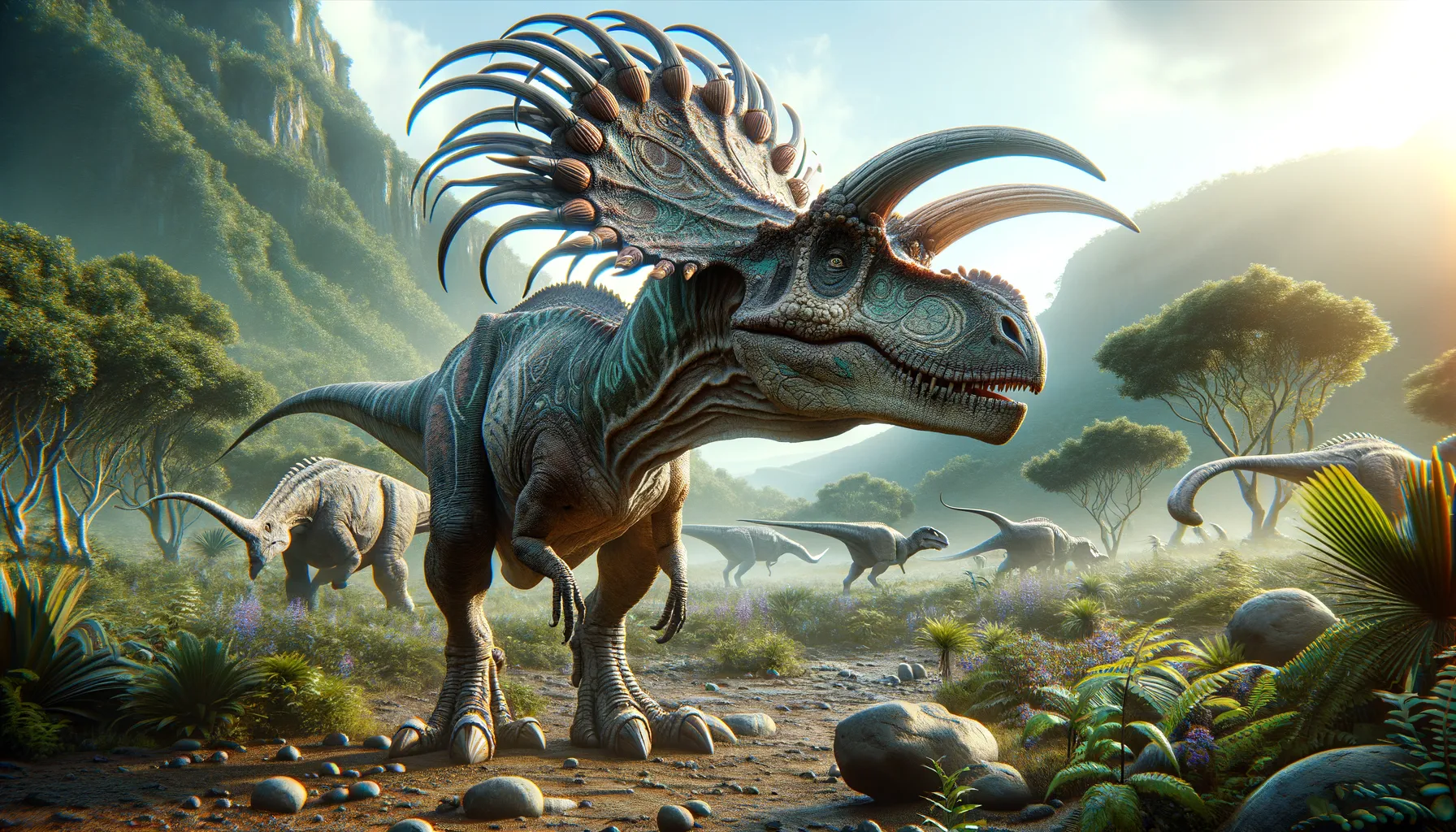
Medusaceratops
A frill-topped titan of the Cretaceous!
Period
Cretaceous
Length
Roughly 20 feet in length.
Height
Approximately 6 feet at the shoulders.
Weight
About 2 to 3 tons.
Medusaceratops was a herbivorous dinosaur known for its distinctive frill adorned with horn-like structures. It shared its environment with other horned dinosaurs and large herbivores. Adapted to a life of grazing on low-growing vegetation, it used its beak to clip off leaves and plants. This dinosaur's impressive headgear was likely used for display and possibly defense.
Diet
Medusaceratops was a plant-eater, feasting on a variety of vegetation. It primarily consumed low-lying plants, bushes, and possibly ferns using its beak.
Hunting
Being herbivorous, Medusaceratops did not hunt for food. Instead, it would roam the land searching for patches of lush vegetation to feed on.
Environmental challenges
It lived in an environment that faced seasonal changes, requiring adaptation to varying climates. Predators such as large theropods posed potential threats. Natural disasters, such as floods, could significantly alter its habitat, impacting food availability.
Speed
Likely slow-moving due to its heavy build.
Lifespan
Estimated to live around 30–40 years.
First discovery
Discovered in Montana, USA in 2003.
Fun Facts
- Medusaceratops was a herbivorous dinosaur that lived around 77 million years ago during the Late Cretaceous period.
- This dinosaur's name means 'Medusa-horned face,' named for its elaborate headgear resembling the snakes of Medusa from Greek mythology.
- Medusaceratops was about 20 feet long, roughly the size of a large car.
- It had a bony frill at the back of its head adorned with unique horn-like structures.
- Fossils of Medusaceratops have been found in Montana, USA, particularly in the Judith River Formation.
- Medusaceratops belonged to the ceratopsid family, which includes famous relatives like Triceratops.
- This dinosaur may have used its frill and horns for display to attract mates or intimidate rivals.
Growth and Development
Young Medusaceratops likely grew rapidly, moving from hatchling size to adult size over several years. The development of its signature frill and horns probably played a role in determining social status and maturity.
Habitat
Medusaceratops lived in a lush, forested region with rivers and floodplains. This habitat supported a variety of plant life, providing ample food resources. The landscape also included open spaces for grazing.
Interaction with other species
It coexisted with other ceratopsians and herbivores, likely competing for similar food sources. Predators in the area included large carnivorous dinosaurs with which it had to contend.
Natural lifespan
Medusaceratops likely lived up to 40 years in the wild.
Reproduction
This dinosaur reproduced by laying eggs, similar to many other dinosaurs. Nests were likely built in secluded areas to protect the young from predators.
Social behaviour
Medusaceratops may have lived in herds for safety and enhanced social interaction. The unique frills and horns might have been used for recognition and establishing hierarchies within groups.
Fossil locations
Fossils of Medusaceratops have been found primarily in Montana, USA. These findings provide crucial insights into its physical structure and the environments it inhabited.
